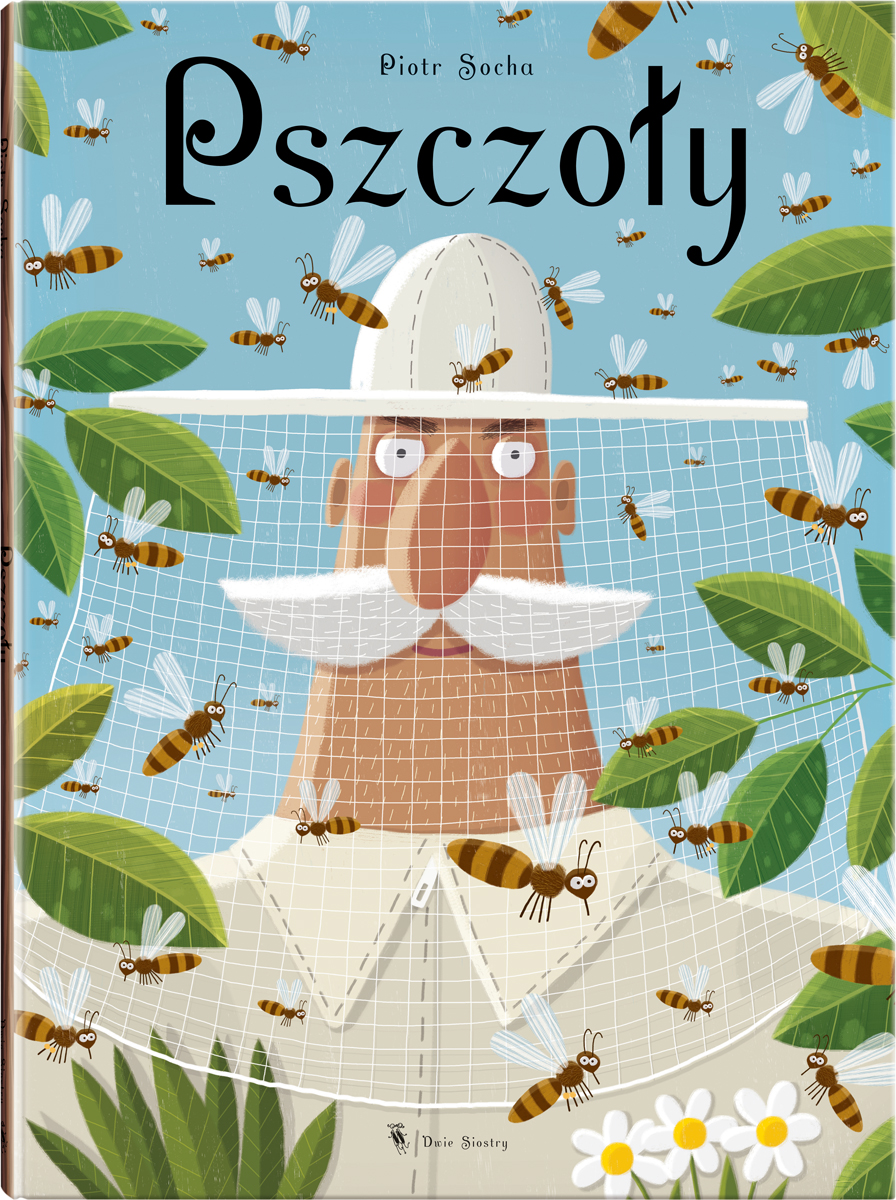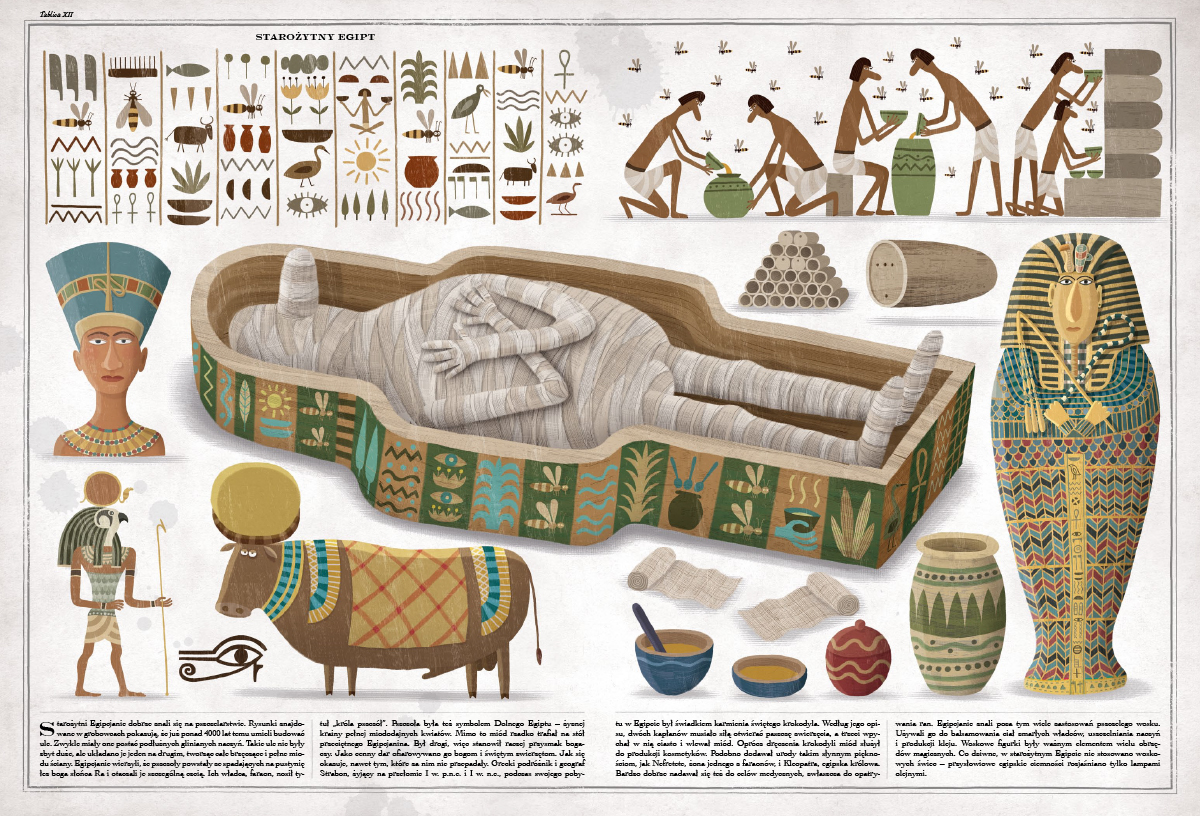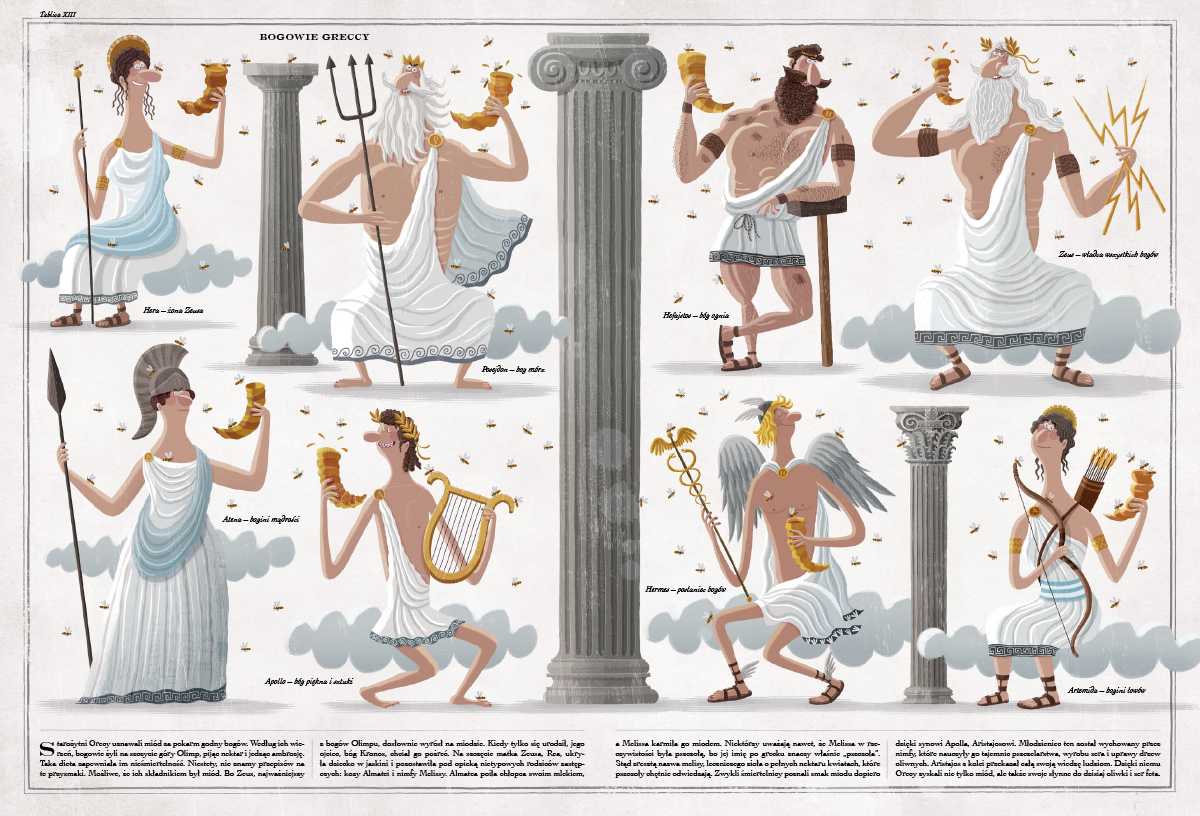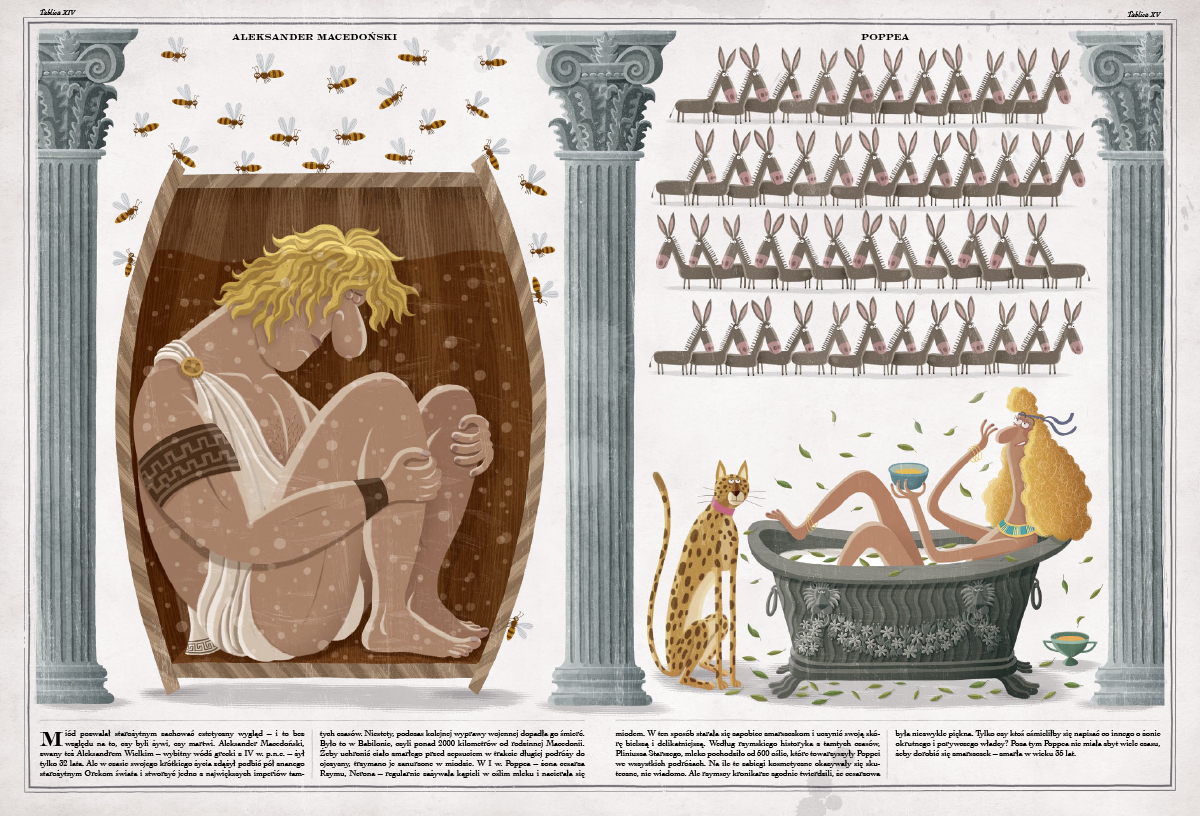Title of the work
Country of the First Edition
Country/countries of popularity
Original Language
First Edition Date
First Edition Details
Piotr Socha, Pszczoły, text by Wojciech Grajkowski. Warszawa: Dwie Siostry, 2015, 72 pp.
ISBN
Awards
2015 – Polish Book Publishers’ Society (Polskie Towarzystwo Wydawców Książek) "The Most Beautiful Book of the Year" Competition (the best children’s and YA book);
2017 – Deutscher Jugendliteraturpreis;
2017 – Wissenschaftsbuch des Jahres 2017;
2017 – the ALCS (Authors’ Licensing & Collecting Society) and SoA (Society of Authors) "Educational Writing Award";
2017 – IBBY Estonia "Tower of Babel".
Genre
Instructional and educational works
Picture books
Target Audience
Children (according to the publisher, aged 6+)
Cover

Courtesy of the publisher.
Author of the Entry:
Krzysztof Rybak, University of Warsaw, rybak.km@gmail.com
Peer-reviewer of the Entry:
Elżbieta Olechowska, University of Warsaw, elzbieta.olechowska@gmail.com
Elizabeth Hale, University of New England, ehale@une.edu.au

Wojciech Grajkowski
, b. 1980
(Author)
Wojciech Grajkowski (1980) graduated from the Faculty of Biology, University of Warsaw and Doctoral Programme at the Nencki Institute of Experimental Biology of the Polish Academy of Sciences (2011). Then he moved to the Educational Research Institute where he worked on the biological sciences at school (i.a. theory and practice of testing pupils’ competence and analysis of educational reform of 2009). At the same time he conducted laboratory courses for school students and workshops for teachers. He is the co-author of nature and biology textbooks, currently, he designs board games and writes children’s books. He authored the texts for Pszczoły and Drzewa illustrated by Piotr Socha.
Bio prepared by Krzysztof Rybak, University of Warsaw, rybak.km@gmail.com

Piotr Socha
, b. 1966
(Illustrator)
Piotr Socha (1966) studied at the Academy of Fine Arts, Warsaw. Since 1990’s he is best known as a press illustrator working for many Polish and foreign newspapers and magazines, including Machina, Polityka, Gazeta Wyborcza, Newsweek, Harvard Business Review, and Polish edition of Playboy magazine. He also illustrates children’s books and board games, but starting in 2015, Pszczoły became a book that generated not only positive reviews and awards in Poland, including the best children’s and YA book in the Polish Book Publishers’ Society (PTWK) at "The Most Beautiful Book of the Year" Competition in 2015, but also international recognition (i.a. many foreign editions and awards, including the Deutscher Jugendliteraturpreis in 2017 or the Wissenschaftsbuch des Jahres 2017). In 2018 he illustrated another big-format book Drzewa [Trees]. More about Socha on his official page (accessed: March 4, 2019).
Bio prepared by Krzysztof Rybak, University of Warsaw, rybak.km@gmail.com
Translation
Bulgarian: Пчелите [Pchtelite], trans. ?, София [Sofiya]: Дакелче [Dakelche], 2018.
Chinese (simplified): 蜜蜂 [Mi feng], trans. 李佳 [Li Jia], ? : 后浪丨浙江教育出版社, 2018.
Czech: Včely, trans. Marta Harasimowicz, Praha: Slovart, 2017.
Dutch: Het bijenboek, trans. Greet Pauwelijn, Tielt: Lannoo, 2016.
English: The Book of Bees, trans. Agnes Monod-Gayraud, London: Thames & Hudson Ltd., 2016 (UK); Bees: a honeyed history, trans. Agnes Monod-Gayraud, New York: ABRAMS Books for Young Readers, 2017 (USA).
Estonian: Mesilased, trans. Marius Peterson, Tallinn: Varrak, 2017.
Finnish: Mehiläinen, trans. Päivi Paloposki, Helsinki: Nemo, 2016.
French: Abeilles, trans. Lydia Waleryszak, Paris: De La Martinière jeunesse, 2016.
German: Bienen, trans. Thomas Weiler, Hildesheim: Garstenberg, 2016.
Greek: Μέλισσες [Melisses], trans. Μαριάννα Ψύχαλου [Mariánna Psýchalou], Αθήνα [Athina]: Μικρή Σελήνη [Mikri Selini], 2018.
Italian: Il regno delle api, trans. Valentina Parisi, Milano: Electakids, 2016.
Japanese: ミツバチのはなし [Mitsubachi no hanashi], trans. 武井 摩利 [Mari Takei] , 品川区 [Shinagawa]: 徳間書店店 [Tokuma Shoten], 2018.
Korean: 꿀벌 [Kkulbŏl], trans. 이지원 [Lee Ji-won], 서울 [Seoul]: 풀빛 [Pulbit], 2017.
Lithuanian: Bitės, trans. Kazys Uscila, Kaunas: Debesų ganyklos, 2017.
Norwegian: Den store boken om bier, trans. Heidi Sævareid, Oslo: Fontini, 2018.
Russian: Пчелы [Pchely], trans. Софья Кобринская, Mocква [Moskva]: Самокат [Samokat], 2017.
Slovak: Včely, trans. Alexander Horák, Bratislava: Slovart, 2017.
Spanish: Abejas, trans. Katarzyna Motoniewicz y Abel Murcia, Madrid: Maeva, 2016.
Swedish: Stora boken om bin, trans. Tomas Håkansson, Stockholm: Alfabeta, 2017.
Summary
Pszczoły is a large format non-fiction illustrated book. Each spread is dedicated to different topic concerning bees: their biology, production of honey, human-bees relations during history, modern beekeeping etc. Among general topics, the reader may find some connected to antiquity, presenting ancient Egypt, Greek mythology, and ancient history (Alexander the Great and Poppaea Sabina, the second wife of the emperor Nero). Also there are two newspaper-like spreads, containing briefly described facts about bees and beekeeping: on one of them the Aristotle is mentioned, on the other – Virgil’s Georgics. Besides, ancient historians and writers such as Strabo and Pliny the Elder are mentioned, showing the antiquity of bee-keeping and the importance of honey in the ancient world.
Analysis
On the first spread dedicated to ancient Egypt (Tablica XII*), Socha mentions Strabo, a Greek geographer and historian from the 1st century BC and 1st century AD, who during his stay in Egypt witnessed the feeding of a sacred crocodile with cake and honey (cf. Strab. XVII.1.38). The text also mentions that Nefertiti and Cleopatra used honey as beauty cosmetic.
In the spread (Tablica XIII) presenting Olympian gods, one can see Hera, Poseidon, Hephaestus, Zeus, Athena, Apollo, Hermes, and Artemis. All – besides Athena – are very happy as mighty gods, they hold horns filled with nectar in one hand, and their attributes in the other hand. Also their clothes are attached with round golden pins with their initial (only Poseidon has the letter "N", probably because Socha first thought about his Roman version, Neptune, and later did not change the letter to "P").
As one may read in Pszczoły, the ancient Greeks thought that honey was a food worthy of the gods themselves. They consumed nectar and ambrosia – although we do not know the exact ingredients, we may assume, that honey was one of them, because Zeus grew up eating milk from the goat Amalthea (Gr. Ἀμάλθεια, in the Polish text misspelled "Almatea") and honey from the nymph Melissa (Μέλισσα), which literary means "bee" in Greek. It is mentioned that humans got to taste honey thanks to Apollo’s son, Aristaeus (Ἀρισταῖος), who taught people beekeeping, cheesemaking, and how to tame the wild oleaster so it would produce olives.
Two following spreads present historical characters: Alexander the Great and Poppaea Sabina, the second wife of the emperor Nero. Alexander, after his death in Babylon was transported to his native Macedonia in a coffin filled with honey to preserve his body (cf. E. A. Wallis Budge, K.T., The Mummy: A Handbook of Egyptian Funerary Archeology, London: Cambridge University Press 1925, p. 208). Nero’s wife Poppaea on the other hand used honey to remain beautiful. She took baths in asses’ milk and applied honey to her skin. According to Pliny the Elder, the milk came from whole troop of she-asses, which accompanied Poppaea during her journeys (cf. Plin. Nat. 28.50).
There are also two classical references in the book, presented among other short notifications in the newspaper-like spreads. The first informs that Aristotle thought that the queen bee was a male (called by him "a ruler"), but was not clear in the case of workers: on one hand they do housekeeping (females), but on the other they carry a weapon (sting), so they may be males (cf. Arist. Hist. An. V.21–22, IX). The second says that the Roman poet Virgil dedicated to bees one of the books of his Georgics. He compared them to the cyclopes as a sign of respect for their hard work (cf. Verg. G. IV).
It is also worth noting that the individual artistic style of Socha is very comic and colourful. Characteristic round od slim characters, both human and animal ones are exaggerated and full of humour. Also Socha originally presents non-fiction content using not onlyscience book elements such as plates, diagrams, graphs etc., but also a newspaper-like sheets and other attractive and amusing motives to introduce the history of bees in a friendly way.
*Eng. Plate XII. Instead of standard pagination Socha numbered each spread with word "Plate" and Roman numerals as in old anatomy or botanical atlas. Unfortunately this element was changed in some foreign editions, including The Book of Bees which has standard pagination instead.
Addenda
Interview with Agnes Monod-Gayraud, a translator of "Pszczoły" (into English) at Polskie Radio YouTube channel (accessed: February 18, 2018).

The ancient Egypt spread, illustration by Piotr Socha. Courtesy of the publisher.

Greek Gods spread, illustration by Piotr Socha. Courtesy of the publisher.

Alexander the Great (dead) in the barrel filled with honey and Poppaea Sabina taking bath in the milk of a hundred asses and applying honey to her skin, illustration by Piotr Socha. Courtesy of the publisher.


